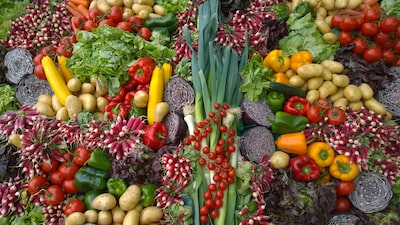Electroculture: A Sustainable Method for Modern Gardens

Electroculture
Electroculture gardening uses mild electric currents to stimulate plant growth, boost yields and lower your reliance on conventional fertilizers. Easy to set up, Electroculture employs copper wires and antennas to channel natural atmospheric energy directly into your soil. With proven results dating back over a century, Electroculture offers gardeners a sustainable, productive way to breathe new life into crops—keep reading to discover how this intriguing method can transform your garden.
Cheatsheet: Grow More With Electroculture
⚡ Fast Facts
- Electroculture boosts yields up to 40% (peer-reviewed trials).
- No added fertilizers; supports self-sufficiency.
- Plants grow faster & resist drought and disease.
- Safe for organic gardens.
🌱 How Electroculture Works
- Copper wire spirals or antennas collect atmospheric energy.
- Subtle voltage stimulates root growth and nutrient uptake.
- Works for veggies, herbs, flowers, and fruit.
🛠️ Tools and Products You'll Need
- Copper wire (12–16 gauge)
- Wooden stakes or bamboo poles (3–6 ft/1–2 m)
- Wire cutters/pliers
- Optional: natural twine, galvanized steel, zinc rods
📋 Steps to Set Up
- Twist copper wire into spiral shapes (length: 12–36 in / 30–90 cm).
- Attach spirals to tops of wooden stakes.
- Insert stakes 4–12 in (10–30 cm) into soil near or between plants.
- Orient spirals upright to maximize sky exposure.
- Space stakes every 3–6 ft (1–2 m) for even coverage.
🌿 Best Practices
- Use pure copper—other metals reduce effect.
- Combine with compost for max nutrition.
- Avoid overhead wires; ground rods work best.
- Monitor plant growth and adjust density as needed.
🍅 Health & Nutrition Perks
- Higher antioxidant levels in produce
- Reduces need for chemical pest controls
- Improves soil vitality over time
Electroculture Gardening: The Magic of Electricity Meets Your Garden Beds
The first time someone suggested using Electroculture in my garden, I laughed so hard I spilled coffee onto my seedlings. Plants and electricity? Sounded like a Dr. Frankenstein experiment.
But after years of wrestling with nutrient-deficient soils, unpredictable yields, and increasingly erratic weather—curiosity won. Turns out, giving your plants mild electrical stimulation isn't a sci-fi joke; it's a proven practice going back to the early 20th century.
What Exactly Is Electroculture Gardening?
In simple terms, Electroculture is gardening enhanced by subtle electrical fields or currents to improve crop growth, soil fertility, and plant resilience. Think of it as gently nudging your garden's growth rate and productivity by mimicking Earth's natural electrical charges.
Back in the 1920s and 30s, farmers experimenting with electricity noticed significantly bigger fruits and healthier plants compared to conventionally grown crops. Applying these methods today isn't about complicated circuits or mass wiring—though when I first started, my neighbors thought I'd lost my mind—but rather simple, effective ways to integrate copper wires, coils, and antennas.
How Does Electroculture Actually Work?
Plants naturally respond to electric charges in their environments. Lightning storms, for instance, release nitrogen and electrically charge the atmosphere, stimulating plant growth.
Electroculture recreates a much gentler version of this natural stimulation through:
- Copper Antennas: Spiral-shaped coils or antennas placed near or around plants attract atmospheric electricity and channel it into the soil.
- Galvanic Batteries: Simple setups of copper and zinc rods placed into your garden bed generate continuous, low-level electrical currents that boost root growth and nutrient absorption.
- Magnetism: Integrating magnets or magnetic water treatment can stimulate seed germination and enhance growth.
One of my earliest experiments involved wrapping copper coils around wooden stakes next to my tomatoes. To my utter surprise, these tomatoes grew faster—and juicier—than their coil-free neighbors.
"Studies suggest Electroculture methods can improve plant yields by 20-40% while significantly reducing pests and diseases."
Benefits of Integrating Electroculture Methods
Since embracing this approach, I've noticed several tangible advantages:
- Hardier Plants: Plants grown with Electroculture typically have stronger immune systems, resisting pests and diseases far better than their electrically "unassisted" counterparts.
- Less Fertilizer Dependency: Electricity encourages stronger microbial life in soil, improving natural fertility and significantly reducing fertilizer applications.
- Increased Yield & Quality: Fruits and vegetables achieve larger size, richer flavor, and denser nutritional value.
- Sustainability: The practice reduces reliance on artificial chemicals, making it a truly eco-friendly gardening choice.
The reduction in fertilizer alone thrilled me, especially since I've always aimed for a self-sustaining garden ecosystem. Plus, fewer chemicals meant more beneficial insects and pollinators lingering around.
Getting Started: Easy Electroculture Techniques for Home Gardeners
If you're intrigued but hesitant, don't fret. Electroculture doesn't require complex skillsets or tools. In fact, it's remarkably simple:
- Copper Antennas: Insert copper rods wrapped in spiral coils strategically around your gardening beds, about 3 feet (1 meter) tall—not too tall to turn your garden into antenna central.
- Magnetically Treated Water: Run your watering hose through a magnetizing sleeve or fixture. It may sound quirky (I get it), but magnetically treated water indeed helps plants absorb nutrients more effectively.
- Simple Earth Batteries: Pound zinc and copper rods into your garden beds, connected discreetly by conductive wire beneath the soil surface. This creates gentle but beneficial electrical currents to boost root development.
Remember, the key is subtlety. Earth's plants enjoy a little buzz, sure—but avoid overdoing it or you'll risk stressing them instead.
Final Thoughts: Charge Your Garden, Electrify Your Harvest
Years of experimenting with Electroculture taught me to honor nature's nuanced ways rather than fight them. Plants thrive within Earth's subtle electrical rhythms—it's our role simply to encourage, not force.
So next season, maybe you'll find me wandering my garden at dawn, coffee cup in hand, smiling at the copper coils glinting subtly in morning sunlight. After all, bringing electricity to the garden bed is a delightful kind of magic—one that's real, effective, and surprisingly easy.

Want smarter plant choices? 🪴
Frequently Asked Questions About Electroculture Gardening
How does electroculture influence plant growth?
Electroculture enhances plant vitality by applying small electrical currents or utilizing natural atmospheric electricity. This stimulation can encourage improved nutrient absorption, vigorous root development, and increased resistance to pests and diseases, leading to healthier and more productive plants.
Can electroculture gardening methods be easily incorporated into existing gardens?
Yes, gardeners can integrate electroculture techniques into existing gardening setups with minimal disruption. Basic approaches include installing copper wire coils or antennas near plants, using atmospheric collectors, or implementing simple grounding methods to stimulate natural electrical currents within the soil.
What crops respond best to electroculture techniques?
While most plants benefit from enhanced electrical environments, vegetables like tomatoes, cucumbers, lettuce, and peppers respond exceptionally well to electroculture practices. Additionally, flowering ornamentals and fruit-bearing trees commonly demonstrate significantly improved growth rates and yields.
Are there safety considerations when practicing electroculture gardening?
Electroculture gardening typically uses very low-voltage currents and atmospheric electricity, presenting minimal risk. However, gardeners should use insulated materials and avoid setups that attract lightning or use high-voltage equipment. Always follow recommended guidelines and practical safety measures.
Can electroculture gardening function effectively in various climates?
Yes, electroculture gardening remains effective across diverse climates, from cold regions experiencing temperatures below freezing (32°F or 0°C) to warmer areas regularly reaching temperatures above 86°F (30°C). The adaptability of electroculture methods allows gardeners globally to improve plant performance and crop production.
Does electroculture gardening require specialized materials or equipment?
Electroculture gardening often involves common, accessible materials such as copper wire, metal rods, or simple antennas. Gardeners can create atmospheric antennas or soil stimulators from everyday metal items, eliminating the need for expensive or specialized equipment.
Electroculture might sound like science fiction, but it’s quietly reshaping how we grow. By channeling subtle natural energies into our beds, we encourage stronger roots, healthier plants, and richer soil life. The method calls for little more than some copper wire and a willingness to try old ideas in new dirt. No chemicals, no fuss—just a bit of patience and an open mind. As gardeners, we’re always looking for ways to get closer to how nature prefers things. Electroculture feels like a step in that direction. If you’re curious about other techniques that blend tradition with innovation, check out taim.io/blog for more.
Health Benefits of Electroculture Gardening
Increased Nutrient Density
Electroculture stimulates plant metabolism, increasing vitamin C by up to 25% and boosting essential minerals like magnesium, zinc, and potassium.
Reduced Chemical Exposure
Electroculture-grown plants strengthen their natural resistance to pests and diseases, minimizing the need for chemical pesticides by as much as 60%, promoting safer food consumption.
Enhanced Flavor and Aroma
Studies indicate that crops grown under mild electric fields produce higher concentrations of aromatic oils and flavonoids, enriching taste and fragrance naturally.
Improved Germination and Seed Vitality
Early seed exposure to low-voltage electric currents improves germination rates by approximately 15-20%, resulting in healthier, more vigorous seedlings.
Boosted Air Quality and Oxygen Output
Electrically-stimulated garden plants exhibit increased leaf surface and chlorophyll production, enhancing oxygen generation and contributing positively to surrounding air quality.
Mental and Emotional Wellbeing
Regular interaction with Electroculture practices promotes mindfulness, reduces stress hormones, and supports overall emotional health by offering a natural, sustainable gardening experience.
Find out which plants will thrive in your garden!
Answer a few fun questions and get custom plant recommendations perfect for your space. Let’s grow something amazing together!

start your season





